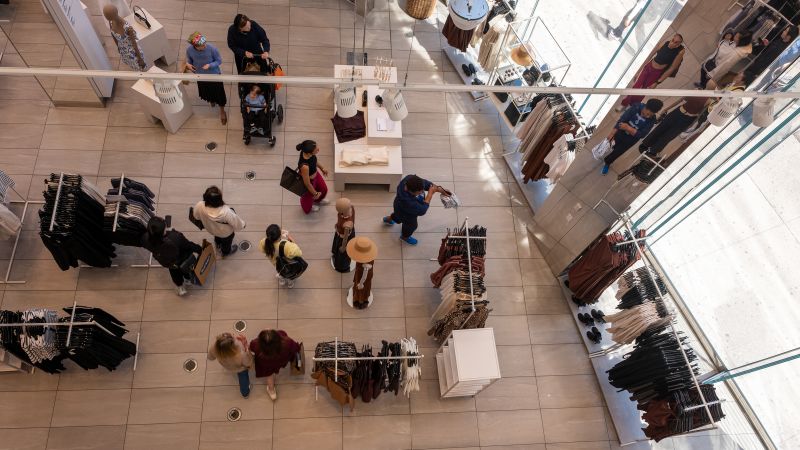CNN
—
American consumers reined in their spending in April following a tariff-fueled buying binge the month before, according to new data released Friday that also showed inflation cooled off again.
Friday’s report from the Commerce Department showed that consumer spending rose 0.2% last month, a weaker-than-anticipated reading but a notable retreat from March’s 0.7% surge when Americans front-loaded purchases — notably new cars — ahead of potential price increases from President Donald Trump’s tariffs.
The latest data also showed inflation moving closer to the Federal Reserve’s target of 2%, almost where it was before the tariffs rollout.
The Personal Consumption Expenditures price index was 2.1% for the 12 months ended in April, a slowdown from the 2.3% annual gain in March. On a monthly basis, prices rose 0.1%, a slight acceleration after holding steady in March.
Economists were expecting the PCE price index to rise 0.2% from March and to ease to an annual rate of 2.2%, and for spending to slow to 0.4%, according to FactSet.
Inflation is now at its lowest rate since September 2024 and is sitting just a hair’s breadth above the Federal Reserve’s 2% target.
However, there likely will be no victory laps nor corks popped from the Fed: Inflation may have been on a cooling course, but the Trump administration’s tariffs — the bulk of which are in a temporary holding pattern — threaten to reverse that progress.
The latest data lands at a time when uncertainty is swelling about the extent to which Trump’s sweeping policies — including efforts to tack steep tariffs on most imported goods — could upend global order and the US economy.
While the tariffs themselves remain in flux, especially following a US Court of International Trade ruling that blocked a large swath of them, economists weren’t expecting the early wave of import duties to have an immediate effect on prices.
There have been significant shifts in tariff policy, and some of the most aggressive duties were curtailed or paused; businesses front-loaded purchases, building up their pre-tariff inventory; and some costs from the initial waves of new tariffs might have been absorbed by retailers and manufacturers.
But the massive uncertainty caused by Trump’s policies have started to negatively ripple through the economy by affecting how consumers and businesses spend.
This story is developing and will be updated.


